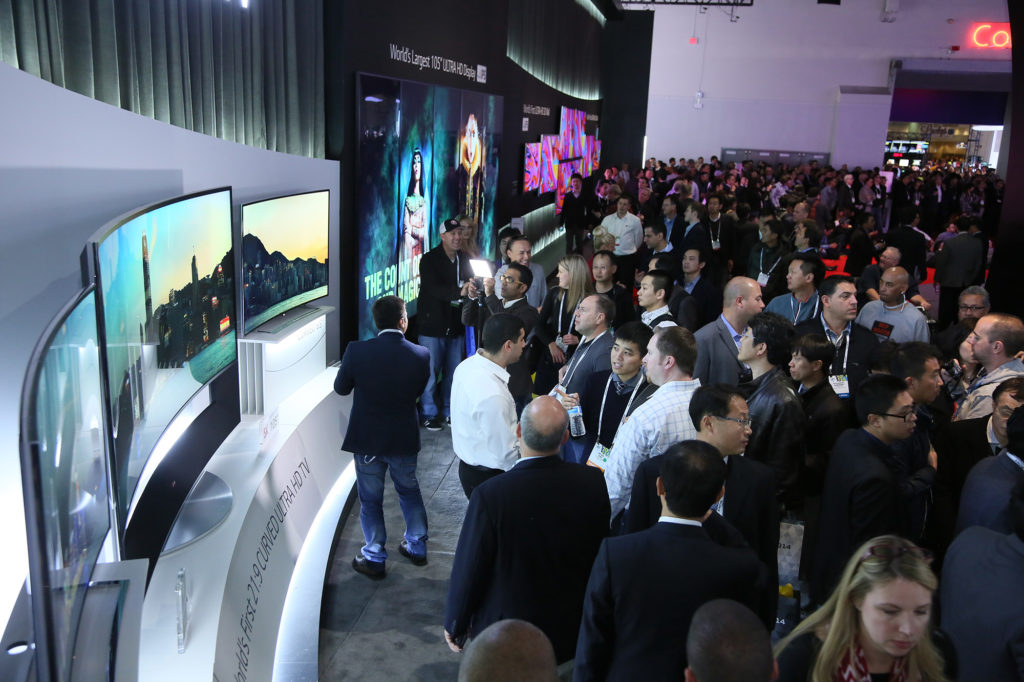Brands
How CES Covered Its Own Trade Show
You saw the innovative products, heard about the news-breaking keynotes and read the tweets (there were hundreds of thousands). For a week in early January, the 2014 International CES® dominated headlines around the world. In fact, the official #CES2014 hashtag alone reached 2.88 million impressions.
But, you may wonder, what’s it like on the inside, developing content for the world’s most important consumer technology trade show? I’d be lying if I said it was easy — but, man, it is so much fun.
I work for the company that owns and produces CES — the Consumer Electronics Association (CEA)®. We hosted more than 150,000 industry professionals who explored a record two million net square feet of exhibit space housing more than 3,200 exhibitors. The 2014 CES featured the best brands and top news media in the world, all of which brought their A-game to Las Vegas.
When the best-of-the-best in the brand publishing and news media come to play, it can be difficult to cut through and get online content noticed, even for us, the producers of the show. To confront this challenge, we began planning early in the year, focusing on five key areas:
Defining our audience
Who are we trying to reach? This was our first and most important question when planning our content strategy. We determined early on that our core audience was not consumers but professionals in the consumer technology space — the people who attend, exhibit at or cover CES, which is an industry-only event. Ultimately, our goal was to increase attendance and facilitate an excellent experience during the show for those who joined us. Our decision to focus on the B2B audience enabled us to promote our exclusive content and behind-the-scenes access. This focus also helped us (and our core team of six digital media marketers) avoid direct competition with the thousands of consumer-facing journalists and brand publishers, who would drown us out or beat us to the punch on breaking news from exhibitors.
Develop storytelling platforms
For CES, we utilize two key Web platforms: our official website, CESweb.org, as well as our blog, Digital Dialogue. The CES website is, unsurprisingly, CEA’s most-trafficked Web property. The site attracted more than three million visits and nearly 18 million pageviews from October through early January. This year we relaunched the site with a mobile-first philosophy using responsive design. The new site aimed to make the show more accessible and help attendees better navigate and find communities. Our site also served as a content marketing hub, highlighting our latest promotions, as well as industry news and our own content, from press releases and blog posts to infographics and videos. We saw excellent results, increasing traffic by 100 percent to CEA’s website, where readers could learn about becoming a member, as well as increasing by 300 percent traffic to our blog — all compared to the previous year.
The blog was an integral tool in our storytelling toolbox — when we wanted to share something longer than a tweet but more informal than a press release or traditional webpage, we turned to the blog. During CES, the blog was our primary way of sharing stories and engaging content, and we published as often as five times a day.
Using an editorial calendar
Before creating any content, however, our first step was to identify our stories and message. Led by our marketing and communications teams, CEA has created a comprehensive “buzz” editorial calendar. The calendar details our organization’s key messages and stories for each day throughout the year, from a scheduled press release to recognizing the anniversary of the launch of Apple’s iTunes. This master calendar is used by everyone in the organization who communicates with external audiences. We expanded upon this calendar, scheduling content by the hour during the week of CES. We created half our content in advance (for example, lists with things to do each day) and half created live on-site in Las Vegas.
Creating content
Creating diversity in our content was extremely important. Our team has a mantra: Content doesn’t have to be just words. In addition to traditional digital content like press releases and research reports, we produced and shared infographics, videos, Google Hangouts, Storify social media recaps, photo-galleries and interactive Prezi presentations all with the goal of reaching our online visitors with a wide variety of digital content to keep them excited and engaged.
Promoting our content
The best content won’t make a dent on marketing goals if no one sees it. To grow readership, we collaborated across teams, from simple peer-to-peer sharing with influencers to seeding new content in email newsletters, broadcasting via our mobile app and in some cases advertising. Social media proved an extremely powerful for us to promote content — not just by sharing in standard posts but strategically selecting content and promoting it using paid social media advertising on networks like Facebook, Twitter and LinkedIn.
At the end of the day, we are most proud that our hard work paid off in concrete and measurable ways — we increased viewership and engagement of our content and helped drive attendance to and participation in the show.
Next up: #CES2015. We’ll see you there.
Jamie Carracher is a Senior Manager on the Digital Media Marketing team at the Consumer Electronics Association (CEA), producer of the International CES, the world’s most important global gathering for innovation. A former journalist and public relations consultant, he has provided support to some of the largest brands and organizations in the technology, telecommunications and health industries. You can follow him on Twitter @Jamieca
Contently arms brands with the tools and talent to become great content creators. Learn more.
Image by Dennis GoedegebuureGet better at your job right now.
Read our monthly newsletter to master content marketing. It’s made for marketers, creators, and everyone in between.





